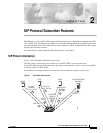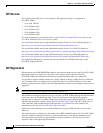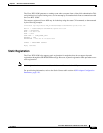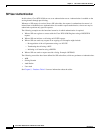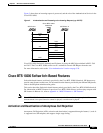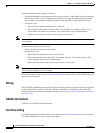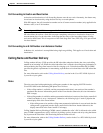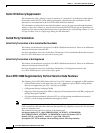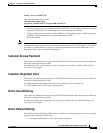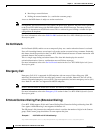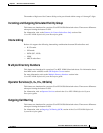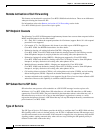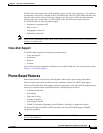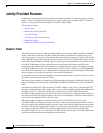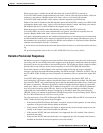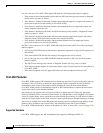
2-5
Cisco BTS 10200 Softswitch SIP Protocol User Guide
OL-5352-03
Chapter 2 SIP Protocol Subscriber Features
Cisco BTS 10200 Softswitch-Based Features
Figure 2 shows how an incoming request is processed, and the role of the Authentication Service in the
Cisco BTS 10200.
Figure 2 Authentication and Processing of an Incoming Request (e.g. INVITE)
Cisco BTS 10200 Softswitch authenticates IP phones by using the MD5 digest defined in RFCs 3261
and 2617. The Cisco BTS 10200 verifies a user’s credentials on each SIP Request from the user.
For more information, refer to the “User Authentication” section on page 5-29.
Cisco BTS 10200 Softswitch-Based Features
Softswitch-based features are directly provided by the Cisco BTS 10200 Softswitch. SIP phones may
provide some features on their own; for information on the features provided by the different SIP phones,
refer to the SIP phone administration guides.
This section describes Softswitch-based features entirely provided by the Cisco BTS 10200 Softswitch.
For information on MGCP features in previous Cisco BTS 10200 releases, and how they compare with
SIP features in Release 4.4, refer to Appendix A, “MGCP Features vs. SIP Features.”
Note Cisco BTS 10200 Softswitch Announcements are customizable on a business group basis. If an
announcement is not provisioned or cannot be played, a reorder tone is played.
Activation and Deactivation of Anonymous Call Rejection
Anonymous Call Rejection (ACR) activation and deactivation is supported through a feature (*) code. It
is supported on a SIP endpoint, and supports single-stage dialing.
87898
Invite
Cisco BTS 10200
Softswitch
SIP Phone 1
Invite
SIP Phone 2
401
ACK
Invite
ACK
200
BYE
200
BYE
401
BYE
ACK
200
200
IP IP



